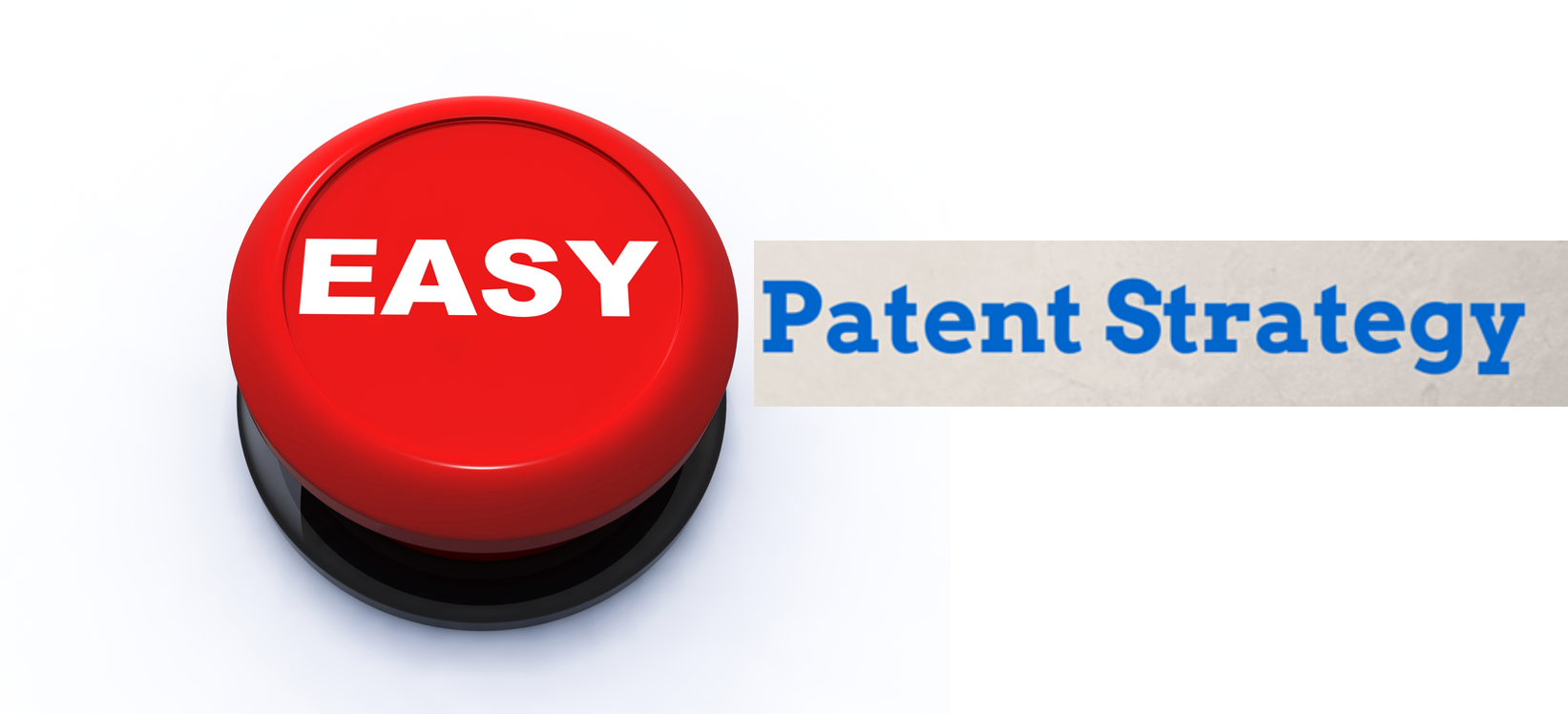 Last week, an en banc Federal Circuit (that is, the majority of the sitting judges, not just the usual three judge panel), rendered a decision that saved the patent that keeps the ANGIOMAX(R) product from generic competition. In short, the Federal Circuit saved this successful blood thinner medicine from generic competition and, in so doing, saved the proverbial "bacon" of The Medicines Company. Since I wrote about this case about a year ago when the ANGIOMAX patent was invalidated by a three judge Federal Circuit panel for violating the US "on sale bar," I thought it prudent to update the post with this new information.
The purpose of this post is not to summarize the new "on sale bar" rule. Many law firms and commentators have already done so. A good summary can be found here. In short, the law
Last week, an en banc Federal Circuit (that is, the majority of the sitting judges, not just the usual three judge panel), rendered a decision that saved the patent that keeps the ANGIOMAX(R) product from generic competition. In short, the Federal Circuit saved this successful blood thinner medicine from generic competition and, in so doing, saved the proverbial "bacon" of The Medicines Company. Since I wrote about this case about a year ago when the ANGIOMAX patent was invalidated by a three judge Federal Circuit panel for violating the US "on sale bar," I thought it prudent to update the post with this new information.
The purpose of this post is not to summarize the new "on sale bar" rule. Many law firms and commentators have already done so. A good summary can be found here. In short, the law
UPDATE: Lack of Patent Strategic Focus Results in $100’s Millions in Lost Value
Why Business Fails to Generate Patenting Strategies that Protect Innovation Value & How to Make It Easier
 Business leaders often find the decision of whether to obtain patent protection for their company's innovations to be difficult. Of course, conventional wisdom, not to mention legions of patent attorneys, assert that patents are "important" to "protect" one's business. In my experience, however, few business people can clearly articulate specifically why and to what extent patents can and will create real financial value for their business. This means that, in many companies, the decision to obtain (or not obtain) patent protection in a particular situation comes down to evaluation of anecdotal information from which a "business judgment" is formulated. In my view, when based only on anecdotes, as opposed to real data, such "business judgment" effectively amounts to nothing more than a "belief system" in which patents are viewed as relevant or irrelevant to the business over time.
As an example
Business leaders often find the decision of whether to obtain patent protection for their company's innovations to be difficult. Of course, conventional wisdom, not to mention legions of patent attorneys, assert that patents are "important" to "protect" one's business. In my experience, however, few business people can clearly articulate specifically why and to what extent patents can and will create real financial value for their business. This means that, in many companies, the decision to obtain (or not obtain) patent protection in a particular situation comes down to evaluation of anecdotal information from which a "business judgment" is formulated. In my view, when based only on anecdotes, as opposed to real data, such "business judgment" effectively amounts to nothing more than a "belief system" in which patents are viewed as relevant or irrelevant to the business over time.
As an example
Who Needs a Patent?
 My response to the question posed in the title of this post is typically: “the only person who needs a patent is a patent attorney.” Indeed, if a patent attorney fails to convince clients like you that they need to obtain a patent, she will quickly lose her livelihood. You should therefore be skeptical if a patent attorney recommends that you move forward with a patent without also advising you to first fully evaluate your business model, your go-to-market strategy and the competitive landscape and determining along with you how the available patent protection may allow you to realize your company's revenue and exit goals.
My response to the question posed in the title of this post is typically: “the only person who needs a patent is a patent attorney.” Indeed, if a patent attorney fails to convince clients like you that they need to obtain a patent, she will quickly lose her livelihood. You should therefore be skeptical if a patent attorney recommends that you move forward with a patent without also advising you to first fully evaluate your business model, your go-to-market strategy and the competitive landscape and determining along with you how the available patent protection may allow you to realize your company's revenue and exit goals.
This is not to say that patents are never the right thing or even often the right thing for entrepreneurs. To the contrary, examples abound for companies where patents served as a primary means of
Strategic Patenting 4: A Case Study of Success
The Takeaway: In the 4th post in this Strategic Patenting Series, a case study is presented of a company that created durable market-making patent protection for a successful consumer product innovation using a disciplined patenting strategy. The strategic patenting efforts of Procter & Gamble undertook with its market-leading Swiffer Wet Jet® floor cleaning system allowed the company to create strong protection of the function of the basic product. This, in turn, resulted in protection of the underlying consumer benefits provided by this innovative floor cleaning system, a fact that allowed the company to prevent functional aspects of its system from being included in knock-off products. Moveover, P&G leveraged its ongoing consumer insights to continue to grow its patent portfolio. In short, the company's successful strategic patenting efforts have "made it cheaper to go through them than around them," thus contributing to its market leadership for this innovation for the past
Why the IP Law Firm Business Model is Broken And What I Am Doing About It
As a former IP law firm shareholder and senior corporate lawyer, I know all too well the expense required to start and maintain an IP law practice. Not only are IP lawyers of all levels of experience paid handsomely, but so are the highly skilled paralegals, docket clerks and administrative professionals traditionally required create the infrastructure needed to handle the myriad of details involved in an IP law practice. Of course, this expensive infrastructure must be sustaining, so while a lawyer serves today’s clients, her eye must also be on finding the next client because payroll and rent obligations don’t take a holiday when clients do. This "feed the beast" nature of the IP law practice model was a primary reason that I decided several years ago that I would not again work in the traditional practice of law. How could I? The standard legal service framework required me to build
False Marking Lawsuits are Real Problem for Business and Make Little Sense When Applied to Expired Patents
 The threat of false marking lawsuits has garnered much attention in the IP business press in the last couple of years. Companies of all sizes have been hit with qui tam actions (that is, suits brought by an individual or company on behalf of the US government to right wrongs done to the government, not the individual) where the basis of the action is the mis-marking of a product with an incorrect or expired patent number. Like a gold rush, these lawsuits have resulted in a number of legal entrepreneurs seeking out products that are incorrectly marked--usually by identification of expired patents, which is an easy thing to find--and their bringing suit against the offending companies. Indeed, there were over 500 false marking lawsuits filed in 2010, making this cause of action seem almost like a
The threat of false marking lawsuits has garnered much attention in the IP business press in the last couple of years. Companies of all sizes have been hit with qui tam actions (that is, suits brought by an individual or company on behalf of the US government to right wrongs done to the government, not the individual) where the basis of the action is the mis-marking of a product with an incorrect or expired patent number. Like a gold rush, these lawsuits have resulted in a number of legal entrepreneurs seeking out products that are incorrectly marked--usually by identification of expired patents, which is an easy thing to find--and their bringing suit against the offending companies. Indeed, there were over 500 false marking lawsuits filed in 2010, making this cause of action seem almost like a
How the Northeastern Indiana Amish Serve as a Business Lesson about Patents
I have been spending time in Northeastern Indiana--the land of my roots--to introduce my children to their aunts, uncles and many, many cousins. Catching up with extended family has made it difficult to formulate a post in the past couple of weeks, but I have a few moments this morning and wanted to capture a thought that has been rattling around in my head since I arrived here. Anyone who has spent time in this part of the U.S. will be familiar with the presence of the Amish as part of the cultural landscape. My children, as city kids, are fascinated whenever they see a carriage with families traveling along the side of the roads. However, I invariably consider about how stifling I would find it to not be able to interact with the outside world in the way that is familiar to me. In short, I wonder what it
Have a Pending US Patent Application? There’s Never Been a Better Time to Make a Deal with the Patent Office
The US Patent Office is in a deal-making mood. Really. Ever since Director Kappos told his examiners last Fall that "patent quality does not equal rejection," I have heard many stories about how patent applications that appeared to be stuck in the limbo 0f serial rejections are now being allowed. Those of us who talk about such things online are in agreement that we may be operating in an unprecedented favorable environment of patent allowances. The data bear out this anecdotal evidence: patent issuances are up 35% this year over last year. My sense of what is happening, which has been confirmed by other experienced patent folks to whom I have spoken, the perspective of the Patent Office has changed. The consensus is the U.S. patenting process is much less adversarial today. In recent years, examiners were effectively told by the Patent Office administration that "there needs to
Much Ado About Patent Marking: Why It is So Hard for Corporations to Get It Right and Why False Marking Lawsuits Might be a Good Thing Overall
 It is fairly rare for patents to make hit the radar screen of mainstream news outlets but, recently, there has been much space allotted to the issue of patent mis-marking and lawsuits being brought by third parties for "violation" of the law requiring that products cannot be marked with an incorrect patent number. Indeed, the usually substance-free local paper in my mother's Southwest Florida community reported about the flood of patent mis-marking lawsuits. And, it is no wonder that the undoubtedly arcane issue of patent marking has reached the status of "news" in a small-town paper given the huge number of cases currently pending in the federal courts. It seems as if patent marking litigation may be the new business model for trial lawyers who are
It is fairly rare for patents to make hit the radar screen of mainstream news outlets but, recently, there has been much space allotted to the issue of patent mis-marking and lawsuits being brought by third parties for "violation" of the law requiring that products cannot be marked with an incorrect patent number. Indeed, the usually substance-free local paper in my mother's Southwest Florida community reported about the flood of patent mis-marking lawsuits. And, it is no wonder that the undoubtedly arcane issue of patent marking has reached the status of "news" in a small-town paper given the huge number of cases currently pending in the federal courts. It seems as if patent marking litigation may be the new business model for trial lawyers who are
Corporate IP Managers: There are Bargains Galore Available at Some of the Most Prestigious Law Firms
 With corporate legal budgets being cut more than 10% in 2009 it might seem like challenging times to manage a corporate IP department. To add to the difficulties, such reductions are occurring even while many corporations are increasing the focus placed on creation of value using strategic IP management. Corporate IP managers must therefore obtain more valuable IP with smaller budgets.
Fortunately for corporate IP managers, the current economic climate has forced many prestigious law firms to, perhaps for the first time, develop innovative billing and practice models. This has not only resulted in the effective billable rates of these law firms effectively dropping more than 10%, but many law firms have or are developing more efficient ways to deliver legal services to their clients. Smart law firms will pass these cost savings on to their clients to
With corporate legal budgets being cut more than 10% in 2009 it might seem like challenging times to manage a corporate IP department. To add to the difficulties, such reductions are occurring even while many corporations are increasing the focus placed on creation of value using strategic IP management. Corporate IP managers must therefore obtain more valuable IP with smaller budgets.
Fortunately for corporate IP managers, the current economic climate has forced many prestigious law firms to, perhaps for the first time, develop innovative billing and practice models. This has not only resulted in the effective billable rates of these law firms effectively dropping more than 10%, but many law firms have or are developing more efficient ways to deliver legal services to their clients. Smart law firms will pass these cost savings on to their clients to


